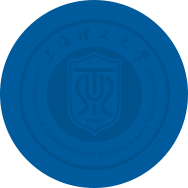Home · Research · Discipline · Optical Engineering Discipline
Brief Information of Nano-photonics Research Team
Nano-photonics, especially its comprehensive utilization of multiple factors in light field has become one of the key directions for the future development of optics and has been listed as one of research orientations of the National Natural Science Foundation of China in the 13th-five-year-plan period. In 2017, the research project “A Study of a Multi-dimensional (polarization, phase, frequency, amplitude, pulse width and mode field) New-Type of Light Field by Means of Precise Control of Physical Interaction between Light Field and Matter and its Interdisciplinary Applications in Information, Chemistry, Life Science and Materials Science” was listed in the 2017 national major research plans, and it will remain listed as the major research plan in the next five years. It serves definitely as a driving force for the team to promote the original research work in the field of Nano-photonics in the future so as to occupy the leading position.
The mission and goal of the Nano-photonics innovative research team is to establish a world-class laboratory and research team in the field of Nano-photonics basic theory and its application; to train and attract top young innovative talents; to promote and strengthen international academic cooperation and exchanges; and to develop and transfer major new application technologies with independent intellectual properties. The team is composed of 23 members, including 4 professors, 9 associate professors and 10 lecturers. Of the 23 team members, there is one fellow of the Optical Society of America (OSA), one fellow of International Society for Optical Engineering (SPIE). In the past five years, the team members have presided over many important scientific projects both at home and abroad, including the 973 program of the Ministry of Science and Technology and the national key research and development program, etc. In the previous research, 2 papers have been published in the international top academic journal Nature Photonics (IF: 37.852), and more than 10 papers have been published in the first tier of SCI journals, with one of papers has been cited over 1400 times. The team has profound research foundation and development potential in the field of Nano-photonics.
Infrastructure
Inverted optical microscope, Nikon Ti2-E, one
Deep-ultraviolet interferometric lithography laser, FQCW266-200, one
3D direct writing lithographic system, Photonic Professional GT, one
Ultra-fast ultra-wide spectrum tunable laser system, SOL ACE35F1KHP, one
Optical fiber processing system, GPX3850, one
Near field optical microscope and spectral imaging system, Ntegra Spectra II, one
Double-faced lithography, MABASB6, one
JY spectrograph, HR550, one
Tunable laser, TSL-550, one
Spectrum analyzer, Anritsu MS9740A, one
532nm Laser, Coherent Verdi V2, one
Fluorescence microscope, Zeiss ImageM2, one
Handheld Raman Spectrometer, Thermofisher TruScan RM, one
EMCCD, Antao DV-897D-CSO, one
1550nm Fiber laser, one
Polariscope, Thorlabs PAX5710 IR3, one
Optical quality analyzer, BP209 IR & WinCamD-UCD23 & BGS-USB-SP928-OSI, three
Optical microscope and micro heating stage, XPV-203E & XPH-300, one
Strong current generator, one
Signal generator, DG1022U & DS345, two
Oscilloscope, UTD2102 & wavesurfer3054, two
Current amplifier, SR570, one
Wavefront phase Measuring System, SID4-389, one
Liquid crystal spatial light modulator, Holoeye Pluto 2K, three
Liquid crystal spatial light modulator, Holoeye GAEA-2, one


Copyright@2018 University of Shanghai for Science and Technology. All rights reserved. 沪ICP备08108292号-5 沪公网安备:31009102000040